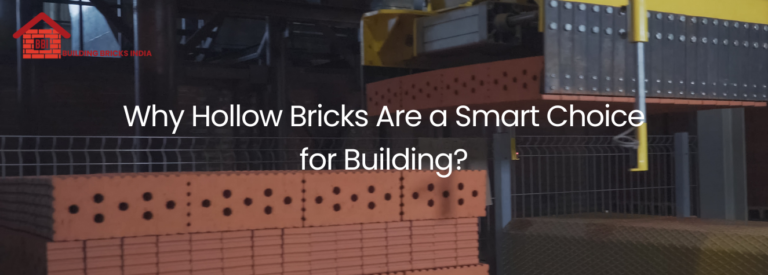In the quest for sustainable construction materials, the spotlight has turned to hollow bricks. These innovative building blocks are not only transforming the way structures are built but also significantly reducing the environmental impact of construction. Let’s delve deeper into how hollow bricks are championing sustainability in the construction industry.
What are Hollow Bricks?
Hollow bricks, also known as hollow blocks or cavity bricks, are precisely what their name suggests: bricks with hollow cores. These blocks are usually larger in size compared to traditional bricks and are manufactured using various materials such as concrete, clay, or fly ash mixed with cement. The hollow space inside these bricks reduces their weight and enhances their insulation properties.
Environmental Benefits
1. Reduced Material Usage: Hollow bricks require fewer raw materials in their production compared to solid bricks. The hollow space within the bricks not only decreases the weight but also reduces the amount of material needed for construction, cutting down on resource consumption.
2. Energy Efficiency: The hollow core of these bricks acts as a natural insulator, offering improved thermal efficiency. This property helps in maintaining stable indoor temperatures, thereby reducing the reliance on heating or cooling systems. Ultimately, this leads to lower energy consumption throughout the building’s lifespan.
3. Lower Carbon Footprint: Manufacturing hollow bricks typically involves a process that emits fewer greenhouse gases compared to traditional solid bricks. Additionally, the energy-saving properties of these bricks during the building’s use phase contribute to a lower overall carbon footprint.
Application in Sustainable Construction
1. LEED and Green Building Certification : Hollow bricks are increasingly being used in projects seeking certifications like LEED (Leadership in Energy and Environmental Design) due to their eco-friendly attributes. The reduced environmental impact of these bricks aligns with the criteria for sustainable building certifications.
2. Construction Waste Reduction: The efficient use of materials in hollow brick construction reduces construction waste significantly. Their uniform shape and size also make them easier to handle, minimising on-site wastage and contributing to cleaner construction practices.
3. Renewable Material Usage: Some hollow bricks are manufactured using recycled materials like fly ash, reducing the dependency on virgin resources and promoting the use of recycled content in construction.
Challenges and Innovations
While hollow bricks offer numerous environmental benefits, challenges persist. The availability of quality raw materials, maintaining structural integrity, and ensuring consistent insulation properties are crucial factors that manufacturers continually address through innovative production methods and material sourcing.
Conclusion
In an era where sustainability has become a top priority in construction, hollow bricks emerge as a beacon of hope. Their eco-friendly attributes, coupled with enhanced thermal insulation and reduced resource consumption, position them as a sustainable building solution for the future. As technology advances and environmental consciousness grows, hollow bricks stand at the forefront of eco-conscious construction materials, paving the way for greener and more sustainable buildings.
Building Bricks India proudly champions the production and promotion of hollow bricks, contributing to a greener and more sustainable construction landscape. Join us in building a better tomorrow, one hollow brick at a time.



